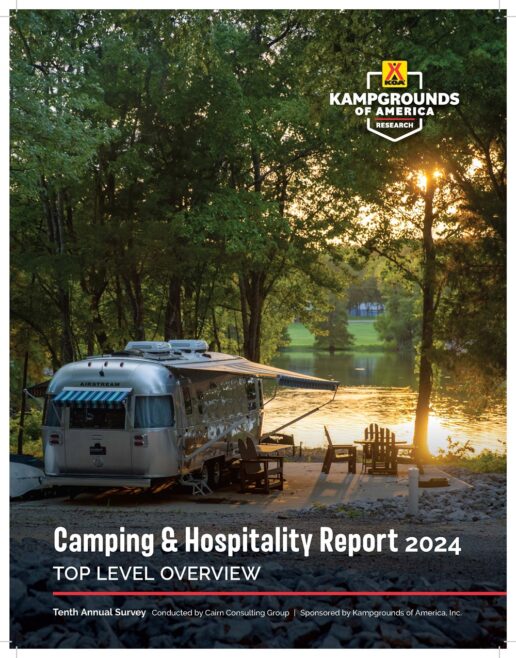
Collecting data is often the first step to fuel change and initiatives. Kampgrounds of America (KOA) has collected consumer data for the past decade. The association pioneered its Camping and Hospitality Report in 2014, which analyzed the camping and outdoor hospitality industry.
In the latest KOA report, the association discovered growth and trends throughout the past 10 years. The association has implemented changes over the years based on the reports.
KOA President and CEO Toby O’Rourke said, “As the outdoor hospitality industry continues to grow and attract new travelers, we see an opportunity to use our data to anticipate changing camper needs so we can be proactive in providing premiere experiences for travelers.”
Recent KOA changes include modernized amenities such as fire pits, outdoor seating, electric vehicle charging stations and pet sites.
In 2023, the number of households identifying as camping households totaled 87.99 million, the second consecutive annual decrease since 2021’s 93.82 million households at the pandemic’s peak.
A total of 53.67 million households took a camping trip in 2023. The total was down from 2022’s high-water market of 58.47 million households.
RV usage increased by 96% compared with 2014, with 6.4 million households camping with RVs.
The report concluded that 39 million consumers camped for the first time in the past decade. Two-thirds of new consumers who camp are from suburban or rural areas while 45% have diverse backgrounds. Nearly a quarter of new consumers who camp have a household income totaling $100,000. Out of the new consumers who camp, 64% do not have children in the household.
The number of households whose members camped in the past year increased by 68%. In the past 10 years, the number of households who camp three or more times annually increased by 98%.
Half of the consumers who camp in the past two years were under 35 years old, compared with 30% in 2014. The report revealed a 54% increase in people of color camping and that 39% of consumers who camp were non-white. Ten years ago, 23% of consumers who camp were non-white.
KOA noted a difference in what travelers are seeking.
“In the past, camping was a way to get out and enjoy the outdoors,” O’Rourke said, “and now we are seeing within the last year this desire to disconnect and slow down.”
More than half of consumers who camp want to slow down and enjoy their experience. Half want to “recharge,” 41% desire a variety of experiences, 37% want to check items off their bucket list and 34% want to make spontaneous plans.
KOA detailed camping barriers in 2023. Among the top barriers were consumers who preferred other accommodations. O’Rourke said KOA addressed this barrier by enhancing its offerings. The association has 108 campgrounds with varying accommodations.
Other barriers include other vacation preferences, affordability, no camping location near home and not having the right gear.
More than half of consumers who camp say they are more likely to continue camping. The total increased 15% compared with 2023.
In planning for the next decade, O’Rourke said, “Our goal will be to continue to enhance amenities as traveler demands shift and continue to expand accommodation styles that suit every need.”
KOA will release more in-depth reports in the coming weeks. These reports will analyze camping in Canada, travel experiences, glamping, wellness travel, camper profiles, economic impacts, campground modernization, camping with families and kids and accessibility.
To read the full report, click here.




